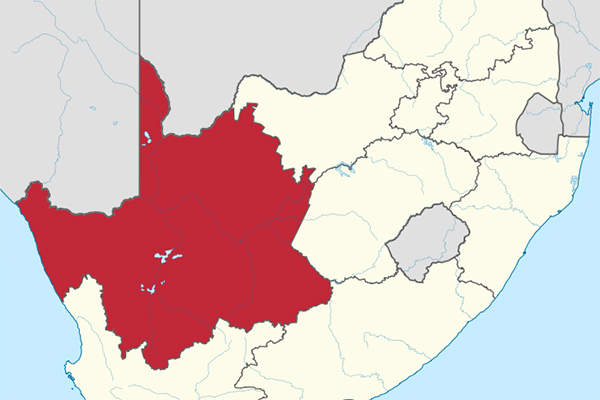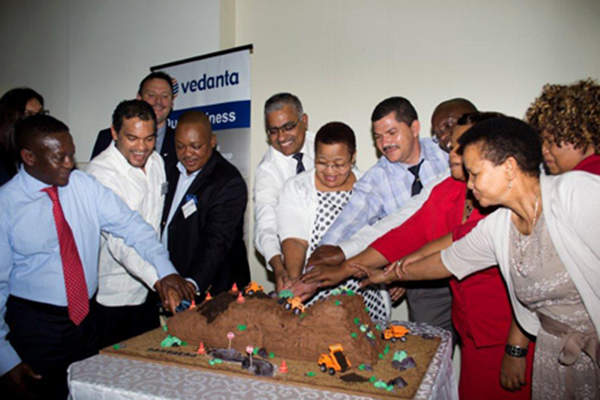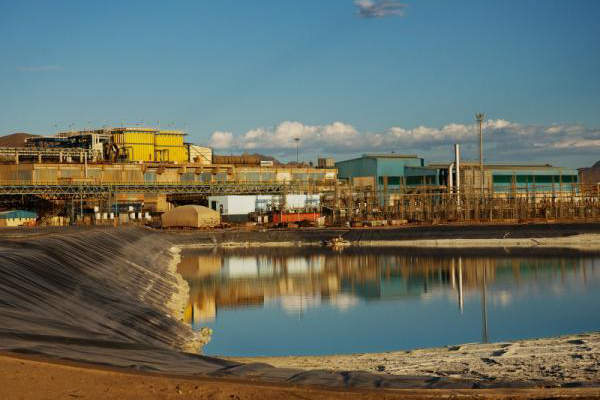
The Gamsberg-Skorpion integrated project in Gamsberg, South Africa, includes the development of an open-pit zinc mine, concentrator plant and associated infrastructure, and the conversion of the Skorpion zinc refinery in Namibia. Upon completion, the project will make South Africa one of the most important suppliers of refined zinc worldwide.
The Gamsberg zinc mine, in the Northern Cape Province of South Africa, is one of the world’s biggest undeveloped zinc deposits. Construction of the mine started with the groundbreaking ceremony in July 2015. First production from the mine is expected by 2017.
Apart from creating approximately 500 permanent jobs, the project is expected to create 1,500 temporary jobs during the construction phase.
Black Mountain Mining (BMM), a joint venture between Sesa Sterlite and Exxaro Resources, operates the project. Vedanta Resources, through its subsidiary Sesa Sterlite, owns 74% stake in BMM, while Exxaro holds the remaining 26%.
Gamsberg-Skorpion integrated project development
Buffelsfontein gold mine (BGM) is located in South Africa, about 160km south-west of Johannesburg.
The integrated project is proposed to be a stage-wise development estimated to cost $782m, which includes $630m to develop the Gamsberg zinc mine along with a 3.62 million tonne a year (Mtpa) capacity concentrator plant.
The remaining amount will be used to develop a 136,078tpa integrated roaster with acid plant and calcine leach section to the refinery at the existing Skorpion mine, to enable it to produce high-grade zinc from Gamsberg’s zinc sulphide ore. The conversion will extend the refinery’s life by at least ten years and enable it to co-treat sulphide concentrates.
The first phase development is expected to have a lifespan of 13 years. It is proposed to mine approximately 12.7Mt of contained metal, while the balance ore will be mined during later phases.
The mineral resources at the zinc mine are contained within two orebodies, namely the North and South pits. The North pit, with an estimated 50-year life-of-mine, will supply the ore for the first phase of the project, while the ore needed for commissioning of the refinery will be provided by the South pit.
Gamsberg mine location, geology and reserves
The Gamsberg mine is located in the Northern Cape Province of South Africa, just south of the N14 National Road connecting Upington to Springbok, and 20km east of the existing Black Mountain Mine and the town of Aggeneys.
The project falls within the northern Aggeneys terrain of the Bushmanland Terrane group. The orebody at Gamsberg is hosted by iron sulphide-rich pelitic rocks and iron formation, and the economic mineralisation comprises sphalerite (zinc) and minor galena (lead).
As of November 2014, the Gamsberg mine was estimated to contain mineral resources of 194Mt.
Mining and processing of ore at Gamsberg
Conventional open-pit mining, including drilling and blasting followed by loading and hauling, will be used at the Gamsberg mine. The mined ore will be transported by haul trucks to the 9.07Mtpa primary crusher located adjacent to the open pit.
The crushed ore will be stockpiled before conveying through a reclaim conveyor to the milling circuit that will consist of a semi-autogenous grinding (SAG) mill, a ball mill, and a cyclone unit to reduce the ore material to a size appropriate for flotation.
The flotation process involves mixing the milled ore with water in a series of agitating tanks and adding chemicals to separate hydrophobic (water-repellent) and hydrophilic (water-loving) minerals.
Various combinations of flotation cells in series will be utilised to produce a concentrated stream of valuable mineral particles, called the concentrate. Three flotation modules carbon floatation, lead floatation and zinc flotation, with a capacity to process approximately 3.04Mtpa of ore will be used for this purpose.
The mineral particles will undergo conditioning, rougher flotation, concentrate regrind, and cleaning in the flotation circuits before producing a filter cake (zinc concentrate), which will be stored within the processing plant under a covered stockpile until dispatched.
The concentrate is proposed to be transported to the Port of Saldanha partly by trucks via the N14, N7 highways and partly by rail through the Loop 10 siding along the Sishen-Saldanha railway line.
Infrastructure facilities at the South African mine
Power supply for the Gamsberg project will be provided from the Aggeneys substation, located approximately 15km to the mine site, through a new 28km-long power line.
A 38km-long surface pipeline will be constructed from the existing Pella abstraction point along the Orange River and will be extended in a southerly direction towards the town of Aggeneys, to supply the required water for the project.
Contractors involved with the Gamsberg mine development
Environmental Resources Management Southern Africa (ERM) has been appointed to undertake the environmental and social impact assessment (ESIA) for the construction and operation of the new Gamsberg zinc mine and associated infrastructure.
Tata Consulting Engineer (TCE) and Associates conducted the definite feasibility study for the mine.






